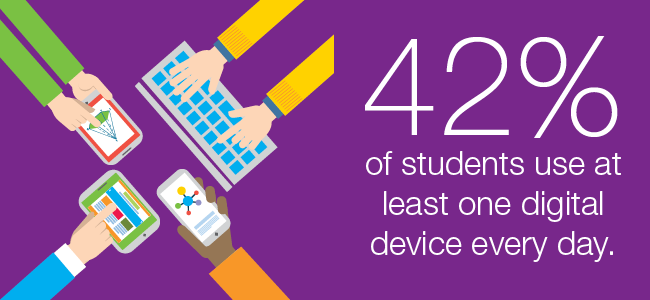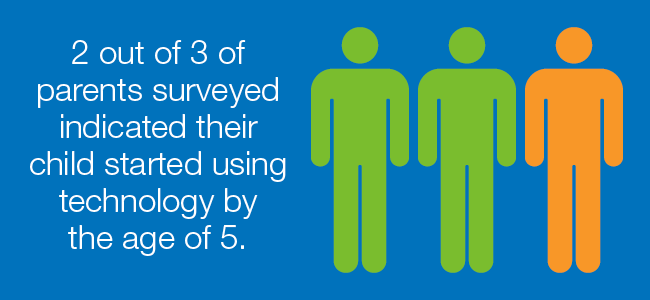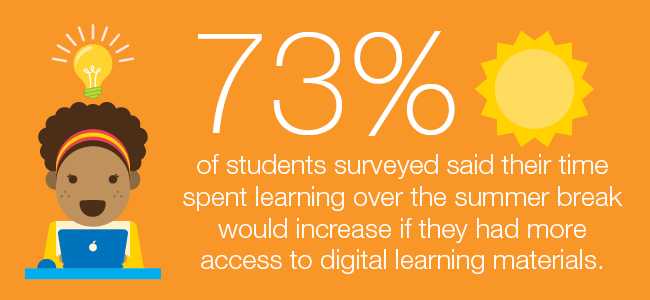
Technology has had a major impact on the way we teach and learn over the past few decades, but the results from a recent digital education survey by Deloitte show that there is still plenty of room for growth. Deloitte analyzed over 2,800 responses from a demographically diverse group of teachers, parents, and students to learn how each group feels about digital trends—both inside and outside the classroom. Overall, the results are mostly positive for the use of digital tools in education, and the findings help show how technology can best be utilized to achieve student success.
Technology in the Classroom
Today’s classrooms have access to a wide range of digital tools, and the survey results show that almost half of classrooms—an impressive 42%—use at least one digital device every day. Laptops, desktops, tablets, and interactive whiteboards are the most common devices used in a typical week, but the device preference for students varied by age. Younger students favored using tablets in the classroom, while older students preferred using laptops. While it appears that technology is being widely used in classrooms, 40% of teachers believe there is room for growth at their school when it comes to the adoption and implementation of technology.

Multimedia learning materials proved to be popular with the teachers surveyed, with about two-thirds (67%) using online educational videos to supplement their lessons. The majority of teachers for all age groups—ranging from Pre-K up to the 12th grade—used educational apps or software in their classrooms, with the highest concentration (73%) falling in the 3rd–5th grade range. That age group was also the main user (66%) of games focused on specific content or skills, while only around a third of 9th–12th grade teachers (35%) used such games in the classroom.
Learning Outside the Classroom
Thanks to the increased accessibility of electronic devices, continuing the learning process outside the classroom has become much more convenient. What’s more, the majority of those surveyed—88% of parents, 84% of teachers, and even 75% of students—saw the benefit of spending time at home learning more about topics covered in school.

One of the biggest benefits of digital learning is not just where you can use it, but also when. With widespread availability and parents who are already comfortable with digital tools, technology is helping the next generation of learners get a head start on their education. Parents are introducing their children to digital learning materials and devices at early ages, with almost two-thirds (64%) of parents surveyed indicating that their child started by the age of 5. And the technology they’re using has a purpose—the top reason (at 53%) that parents acquire digital learning materials is to develop specific skills they want to improve in their child.
Tackling Learning Loss
By using digital learning materials at home, parents and students can help eliminate a major pain point for many educators—learning loss. Lengthy summer and winter breaks interrupt the learning pattern, causing many students to not be able to pick up where they left off without a refresher. Greater access to these materials allows students to continue learning over breaks, which is beneficial to students and teachers alike. In fact, almost three-quarters (73%) of students surveyed said their time spent learning over the summer break would increase if they had more access to digital learning materials.

Teachers Are the Key Drivers
One thing is incredibly clear from the survey results: Teachers play a major role in the adoption and implementation of educational technology. While many teachers face challenges in terms of funding, class size, and training, they have the power to inspire students to continue learning outside the classroom. An incredible 81% of students surveyed said they spend time learning during the previous summer, with 34%–50% of those students giving credit for this to their teachers. And as new teachers take their place in the classroom, we could see a higher use of educational technology as newer teachers have more faith in the difference these devices and materials can make on students’ learning.
What positive effects have you seen when utilizing technology for learning in or out of the classroom? Let us know in the comments below!
Want to learn more about the different ways technology can be used to enrich whole-class learning, collaborative learning, assessment, and STEM activities? Learn more now.>>



